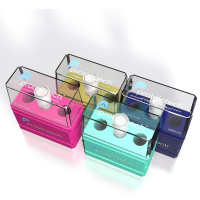Retrovirus-Mediated Gene Transduction of SupT1 Cells
互联网
816
From a technical perspective, the introduction and stable expression of exogenes in mammalian cells has advanced rapidly in the last few years. Of the gene transduction methodologies, genetic transfer using retroviruses remains the most popular. There are two components of a generic retroviral vector (RV) gene transduction system. The first component is the retroviral vector, which has 5′ and 3′ long terminal repeats, a packaging site (Ψ site), a selectable marker, the exogene, and a polypurine tract. In many respects, it resembles the retrovirus from which it is derived; however, structural gene coding sequences for gag, pol , and env have been removed or modified. The presence of the Ψ site allows the vector to be “packaged” into a viral particle in the presence of appropriate structural gene products. These products are supplied by the packaging line, which in its simplest form contains genes encoding retroviral Gag, Pol, and Env. The production of infectious virus is prevented because the sequences that permit the encapsulation of viral nucleic acid, the Ψ site, have selectively been deleted. To prevent successful recombination after the introduction of a Ψ site by the retroviral vector containing the exogene, the structural genes are often introduced separately (i.e., as separate coding units) or “poison” sequences are added around the Ψ site of the retroviral vector.









